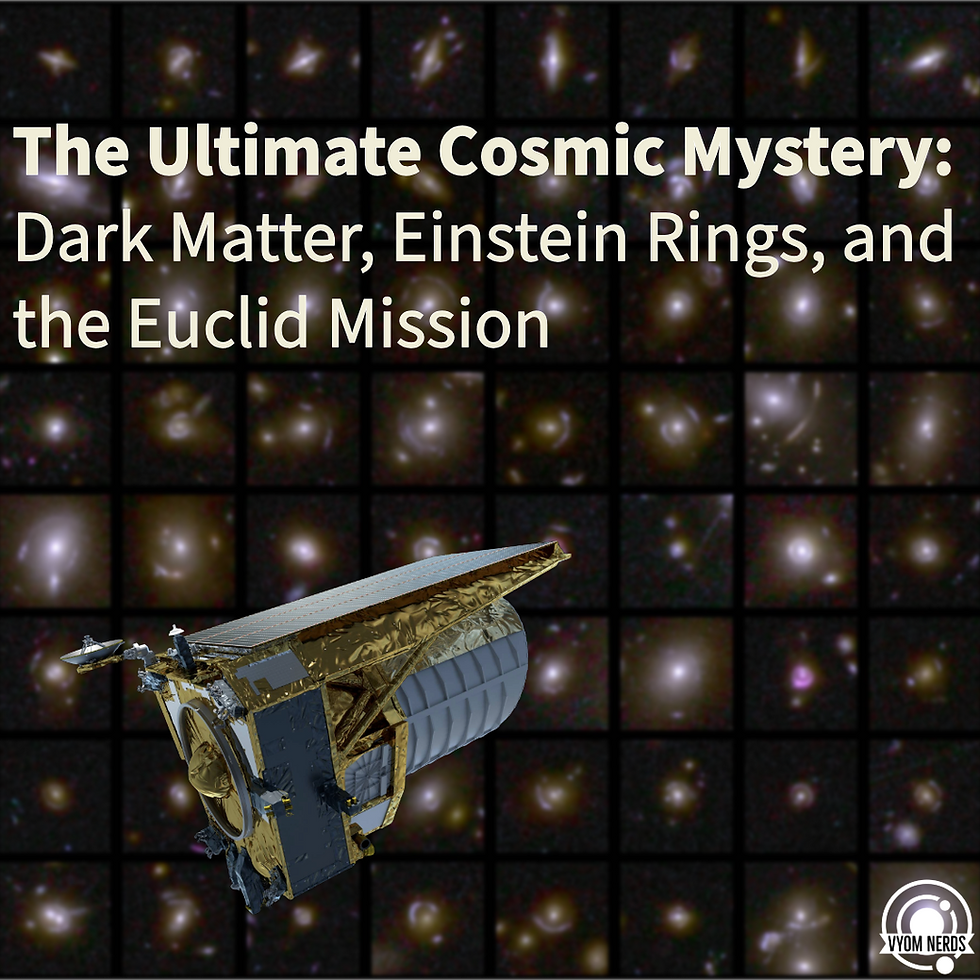- Archis Anupam Mohapatra
- Jun 13, 2023
- 6 min read
Updated: Apr 15

In the dry and deserted mountains of Chile, a telescope is being put together which promises to give us the most detailed map of the Cosmos. Named after the dominatable figure in Astronomy, the Vera C. Rubin Observatory is the first National Observatory to be named after a women astronomer. But who was she and why is this observatory such a big deal?
Vera Cooper was born in Philadelphia, Pennsylvania in 1928. Born into a Jewish Family she was the younger of the Cooper sister. She was naturally curious and observant. She found her way towards physics even as her high school teachers advised her a career in Physics was not for her. Little did they know she was soon going to revolutionize the whole field.
She fought throughout her life, fighting on all fronts to achieve her dreams. When she was pregnant with her second child, she enrolled for her PhD at Georgetown University. Being a mother of 2 and all the work related to raising them was never reflected in her grades. She received her PhD in 1954 with George Gamow as her external thesis advisor.
The year was 1962 and with almost a decade of experience in the field Vera Rubin and her group of students at Georgetown submitted their findings to Astrophysical Journal. They had studied the radial velocities of over 1440 stars (O-B Stars) of our galaxy. A lot of the paper discussed on radial velocity of the stars and the corresponding velocity of gas clouds in radio telescopes but one part of the paper discussed the rotational velocity of the stars.
The following is an excerpt from the paper:
“For 888 stars, the rotational velocity component about the centre of the galaxy has been computed, and a mean curve derived. Toward the centre of the galaxy, the computed curve lies about 15 km/sec above the radio rotation curve (Schmidt 1956). For R>8 kpc, the rotation curve is approximately flat. The decrease in rotational velocity expected for Keplerian orbits is not found. It is shown that systematic observational errors will not account for the shape of the curve.”

Fig. 1 Rubin et all. The variation of for 888 stars, as a function of distance from the center of the galaxy. The weighted mean and the probable error of the weighted mean is shown for each point. The number of stars in each point is shown at the upper edge of the drawing. The solid curve represents the rotation curve for the gaseous component of the galaxy from the radio model of the galaxy (Kwee, Muller, and Westerhout 1954; Schmidt 1956).
The paper drew a lot of criticism as many simply stated that it couldn’t be so or the observations were incorrect or there was some error in her calculations. But why? What was it that led to such comments being made? To understand its content, we need to take a small detour.
We know there are many types of galaxies, some are elliptical, others irregular and some are spiral. Ours and the galaxy closest to us M31(commonly known as Andromeda) both are spiral-type galaxies. To understand the orbital dynamics of the stars in such spiral galaxies we will take the following examples: as we observe in a rotating disc, rotational velocity increases with distance from the centre. What does this mean? Imagine an Olympic discus thrower. As the thrower starts spinning with a burst of acceleration and speed, she stretches her arm slowly increasing the rotational velocity of the discus, as she stretches her arm to the maximum limit, she has achieved the maximum possible velocity and lets go of the object at the correct window to achieve maximum range.


Fig. 2 and 3 Dinu, Daniel & Houel, Nicolas & Louis, Julien. (2019). Effects of a lighter discus on shoulder muscle activity in elite throwers, implications for injury prevention. International Journal of Sports Physical Therapy. 14. 1-11. 10.26603/ijspt20190592.
This very phenomenon is seen in a lot of objects in our day-to-day life. Ceiling fans and CD are popular examples. Here is a simple exercise; try to follow the motion of the blades of a fan by moving your eyes from the centre to the edges. Don’t set the regulator at max complain that everything is blurry. As you do you would have to start working harder and harder to keep it from blurring until you wouldn’t be able as it was just too fast unless you went to the regulator and set the speed to one. So, it’s natural for a rotational velocity to increase when we start travelling from the centre outwards. Johannes Kepler formulated this as his third law of Planetary motion. This simple law of physics can be applied anywhere even if the thing in concern isn’t a planet as seen from the examples discussed above. Astronomers all around had assumed this to stand true irrespective of the object in study.

In galactic physics, we need to consider the influence of gravity and mass. In the following image of a spiral galaxy, we can say for certain that mass is more centrally located (owing to the increased luminosity at the centre compared to edges).

If the mass is concentrated at the centre, then speed will decrease with distance. AAhigher gravitational force at the centre will lead to higher accelerations near the centre and greater orbital velocity. Thus, as we go farther and farther away from the centre, we observe fewer stars, meaning less mass and this velocity should decrease. Following is a graphical representation of the phenomenon.

However, when Vera Rubin conducted the research with her graduate students in 1962 and later more comprehensively with Kent Ford in the 1970s, she found something completely outhe t of box. The measured value of galaxies was quite different. Speeds were essentially constant.

Fig.4 Rubin et al 1978
How could this be possible? What is it that is causing these stars to have so great velocities at the extreme edges of galaxies?Some mass is not visible in any form of light(i.e EM waves). This additional mass helps in explaining the high rotational velocities as observed by Vera Rubin in 1962 and later in 1970s. This extra mass is a headache to every physicist. Explaining its nature is very difficult as we are unable to observe it in any form of Electro Magnetic waves. No Radio, no infrared, no x-ray, no nothing. So, quite naturally the paper published in 1962 was criticized. No one was ready to accept the existence of such exotic matter. But with her paper on the rotational velocities in 1978 and other astronomers coming to the same discrepancy of rotational velocity, the evidence was too much to ignore.
This was the first crucial observational evidence of Dark Matter. But there was a physicist who had reported this possibility way back in 1937. Francis Zwicky used classical physics (virial theorem) to find irregularities in the behaviour of the Coma Cluster. He called this invisible mass dunkle Materie. So, with Rubin’s extensive research with Kent Ford in the 1970’s she proved these irregularities aren’t just a one-off and appears again and again in different galaxies. The search for the ever-elusive dark matter still goes on in many fronts. While some look to the sky others are hunkering down in deep underground mines for the faintest trace of this matter.
The Vera C. Rubin Observatory is set to receive the system's first light in 2024. The Observatory will house Simonyi Survey Telescope a wide-field reflecting telescope with an 8.4-meter primary mirror that will photograph the entire available sky every few nights and the images will be recorded by a 3200 Megapixel CCD imaging camera, the largest digital camera ever constructed. The 3200 MP CCD camera will produce a image so large that 1500 HD TV screens will be required to see a single image. For compression, a standard 4K shooter requires 4HD TVs for a single image. Its primary function is to map the southern skies over and over again for a period of 10 years to create a sort of cosmic timelapse that will enable the astrophysicist to detect changes in the ever-expanding cosmos. This will let us observe the minute changes happening over a long period of time, hopefully giving us a better understanding of Dark Matter and Dark Energy. So, in the end, it's quite natural to name this observatory after someone who was a key figure in giving us the first observational evidence of Dark Matter.








Comments